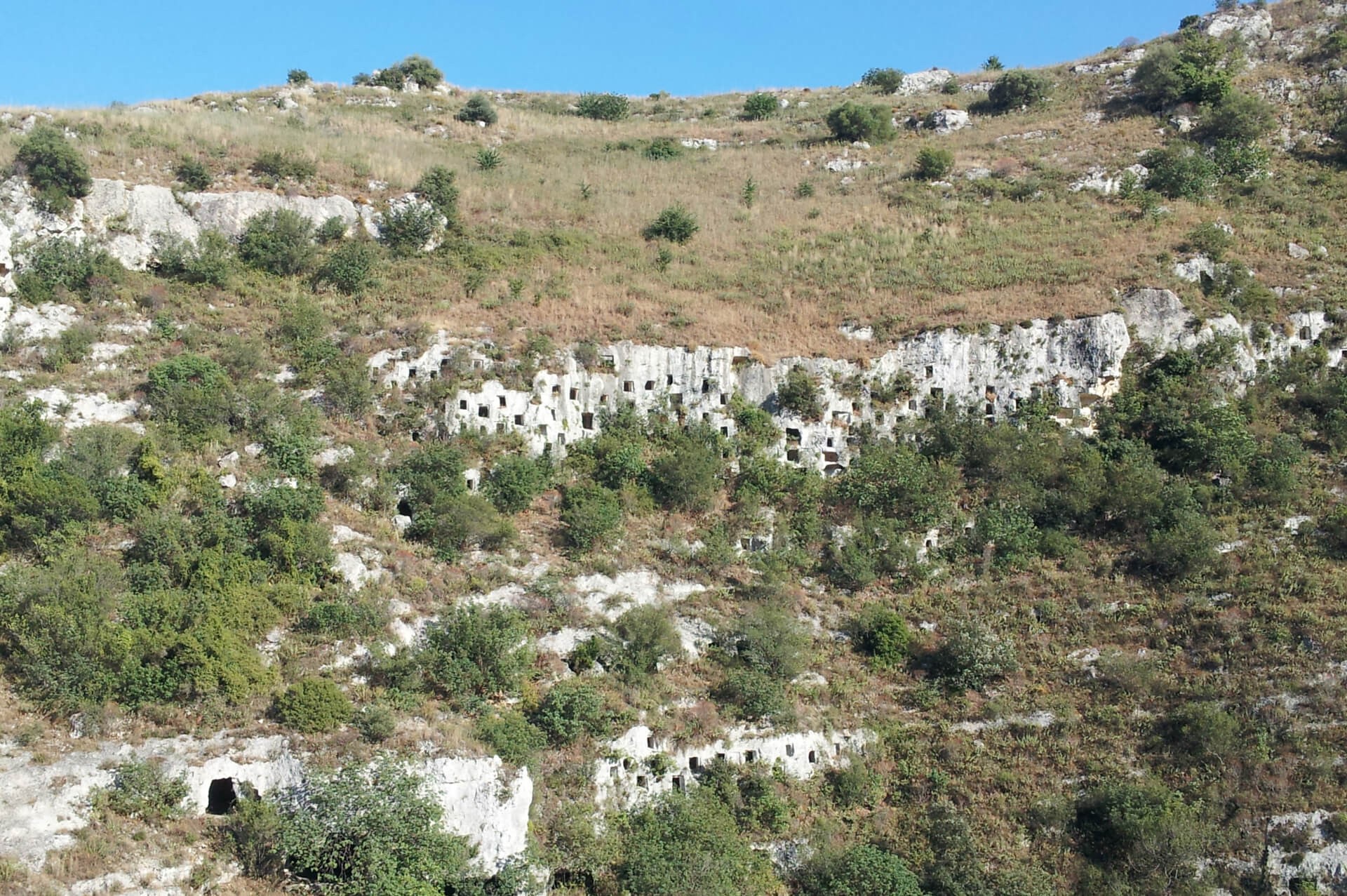Stop in Ferla
On the way to Pantalica we stopped at Ferla with four beautiful baroque churches forming a streetscape which can’t be seen anywhere else. The churches, like so many of SE Sicily’s world heritage listed baroque towns, were all built after the devastating earthquake of 1693. SE Sicily is known throughout the world for its Baroque architecture, but the area also has stunning remnants from the Bronze Age. Outside the town of Buccheri we saw an ancient dry stone building called “niviera”. This was built to store ice – one of early man’s first attempts at a cold-storage warehouse.
...and ready for the adventure in Pantalica
Arriving at Pantalica we walked down into the gorge which has almost 4000 late bronze and early iron age tombs (13th to mid 8th century BC). The Pantalica plateau supported several ancient villages, and families threw ropes over the cliff edges to dig their tombs. Over time these were raided by Greeks, Romans, Byzantines, Arabs, Normans and the myriad other conquerors of the country. By the 12th century many peasants farmers from the plateau had dug out the tombs to make houses from the caves. They still spoke Greek even though the ruling classes spoke Latin, and this variation can still be seen in the underground churches. Some of the catholic churches still show Byzantine-style frescoes, and some such as the Church of St Micidiaro from the 12th century show the separate iconostasis and gabled roof. It’s doubtful if a casual tourist would know where to look for these, but Alessandro and Giuliana were able to lead me into the caves where I could get close enough to touch this amazing ancient artwork. Not that I did.
The gorge around the plateau is a beautifully secluded piece of country. The river is crystal clear, and we saw plenty of tadpoles and fresh water shrimp. Even though the early April temperature was in the teens I couldn’t resist going for a swim underneath the limestone cliffs in the turquoise water. It was freezing, but worth it! Once I’d dried off we continued our walk around the edge of the plateau, peering down into the valley floor and seeing where the neck of the plateau had been excavated. It has yet to be proven beyond doubt, but it’s likely the ancient Greeks excavated a moat across the neck to make the plateau easier to defend.
The importance of Pantalica throughout history is shown by Anaktoron, a prehistoric building with Mycean influence. Alessandro told a spellbinding tale about the way the building would have been used, including the administration, storerooms and possible treasury of the plateau’s villages. Although it’s an incredible site on its own, to have someone who can tell its story was a great privilege.
About the Sicilian nature in Pantalica
The human history of the area is fascinating, but the wildlife has also been recognised by the UNESCO who have listed the area’s great biodiversity. Walking through the area in mid-April we saw several of the area’s 52 species of native orchids, some of which only bloom for two weeks of the year. The wildflowers were all out with their range of colours, softening the landscape and adding to the allure of the place. I would have enjoyed the wildflowers on their own, but being with locals who knew where to look for the orchards and other individual plants among the general vibrancy was very special.
Where to eat in Pantalica
Amongst all the walking we also had lunch at Porta Pantalica run by friends of Alessandro. All the produce was grown on their farm, and included delicious bread made from their Margarita wheat, antipasto including a creamy ricotta and a sausage with a distinctive fennel flavour, followed by fettuccini with pistachio sauce. All washed down with the farm’s home-made dry, smooth red wine.
During the trip back to Ragusa we stopped at Ferla to see the Church of St Antony. This was built with a concave facade to draw the worshippers into the church, but equally fascinating is the forecourt with swirling patterns built of different coloured pebbles. Opposite the forecourt we bought award-winning cannoli made with an authentic Sicilian recipe. Almost too good to be true!
By the time we arrived back at Ragusa I’d missed my last bus to Marina di Ragusa where I was staying. Even though it had been a long, fascinating, exhausting day Alessandro and Giuliana insisted on driving me back, an extra 50 minutes round trip which was very kind of them. But also very typical of the care and attention they showed me all day. Getting deeper into this small area of Sicily for just one day has certainly wetted my appetite for more time with Uncovered Sicily.




